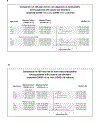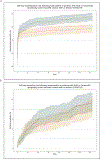Association of COVID-19 with endocarditis in patients with cocaine or opioid use disorders in the US
- PMID: 36510003
- PMCID: PMC9918660
- DOI: 10.1038/s41380-022-01903-1
Association of COVID-19 with endocarditis in patients with cocaine or opioid use disorders in the US
Abstract
The incidence of endocarditis in the US is increasing, driven in part by the rise in intravenous drug use, mostly opioids and stimulant drugs (cocaine and methamphetamine). Recent reports have documented that individuals with COVID-19 are at increased risk for cardiovascular diseases. However, it is unknown whether COVID-19 is associated with increased risk for endocarditis in patients with opioid or stimulant use disorders. This is a retrospective cohort study based on a nationwide database of electronic health records (EHRs) of 109 million patients in the US, including 736,502 patients with a diagnosis of opioid use disorder (OUD) and 379,623 patients with a diagnosis of cocaine use disorder (CocaineUD). Since Metamphetamine use disorder is not coded we could not analyze it. We show that the incidence rate of endocarditis among patients with OUD or CocaineUD significantly increased from 2011 to 2022 with acceleration during 2021-2022. COVID-19 was associated with increased risk of new diagnosis of endocarditis among patients with OUD (HR: 2.23, 95% CI: 1.92-2.60) and with CocaineUD (HR: 2.24, 95% CI: 1.79-2.80). Clinically diagnosed COVID-19 was associated with higher risk of endocarditis than lab-test confirmed COVID-19 without clinical diagnosis. Hospitalization within 2 weeks following COVID-19 infection was associated with increased risk of new diagnosis of endocarditis. The risk for endocarditis did not differ between patients with and without EHR-recorded vaccination. There were significant racial and ethnic differences in the risk for COVID-19 associated endocarditis, lower in blacks than in whites and lower in Hispanics than in non-Hispanics. Among patients with OUD or CocaineUD, the 180-day hospitalization risk following endocarditis was 67.5% in patients with COVID-19, compared to 58.7% in matched patients without COVID-19 (HR: 1.21, 95% CI: 1.07-1.35). The 180-day mortality risk following the new diagnosis of endocarditis was 9.2% in patients with COVID-19, compared to 8.0% in matched patients without COVID-19 (HR: 1.16, 95% CI: 0.83-1.61). This study shows that COVID-19 is associated with significantly increased risk for endocarditis in patients with opioid or cocaine use disorders. These results highlight the need for endocarditis screening and for linkage to infectious disease and addiction treatment in patients with opioid or cocaine use disorders who contracted COVID-19. Future studies are needed to understand how COVID-19 damages the heart and the vascular endothelium among people who misuse opioids or cocaine (presumably also methamphetamines).
© 2022. The Author(s), under exclusive licence to Springer Nature Limited.
Conflict of interest statement
Declaration of interests
LW, NAB, PBD, DCK, NDV, RX have no financial interests to disclose.
Figures





Comment in
-
When 1 + 1 = 3: the COVID-19 and addiction syndemic.Mol Psychiatry. 2023 Feb;28(2):541-542. doi: 10.1038/s41380-022-01927-7. Mol Psychiatry. 2023. PMID: 36550196 Free PMC article. No abstract available.
Similar articles
-
Associations between prescription and illicit stimulant and opioid use in the United States, 2015-2020.J Subst Abuse Treat. 2022 Dec;143:108894. doi: 10.1016/j.jsat.2022.108894. Epub 2022 Sep 30. J Subst Abuse Treat. 2022. PMID: 36206585 Free PMC article.
-
Association between opioid abuse and COVID-19 susceptibility: a propensity score matched study.BMC Infect Dis. 2023 Dec 5;23(1):851. doi: 10.1186/s12879-023-08842-4. BMC Infect Dis. 2023. PMID: 38053042 Free PMC article.
-
Outcomes Associated With Medications for Opioid Use Disorder Among Persons Hospitalized for Infective Endocarditis.Clin Infect Dis. 2021 Feb 1;72(3):472-478. doi: 10.1093/cid/ciaa062. Clin Infect Dis. 2021. PMID: 31960025 Free PMC article.
-
A systematic review and meta-analysis of medications for stimulant use disorders in patients with co-occurring opioid use disorders.Drug Alcohol Depend. 2020 Nov 1;216:108193. doi: 10.1016/j.drugalcdep.2020.108193. Epub 2020 Aug 1. Drug Alcohol Depend. 2020. PMID: 32861136 Free PMC article.
-
Opioid use disorder in cancer patients.Curr Opin Support Palliat Care. 2023 Jun 1;17(2):98-103. doi: 10.1097/SPC.0000000000000640. Epub 2023 Mar 3. Curr Opin Support Palliat Care. 2023. PMID: 36866646 Review.
Cited by
-
Suicidal ideation and suicide attempt following ketamine prescription in patients with treatment-resistant depression: a nation-wide cohort study.Res Sq [Preprint]. 2023 Aug 7:rs.3.rs-3207199. doi: 10.21203/rs.3.rs-3207199/v1. Res Sq. 2023. Update in: Transl Psychiatry. 2024 Aug 9;14(1):327. doi: 10.1038/s41398-024-03033-4. PMID: 37609161 Free PMC article. Updated. Preprint.
-
Familial coaggregation and shared genetic influence between major depressive disorder and gynecological diseases.Eur J Epidemiol. 2024 Oct;39(10):1161-1170. doi: 10.1007/s10654-024-01166-w. Epub 2024 Nov 4. Eur J Epidemiol. 2024. PMID: 39495462
-
Repurposing ketamine to treat cocaine use disorder: integration of artificial intelligence-based prediction, expert evaluation, clinical corroboration and mechanism of action analyses.Addiction. 2023 Jul;118(7):1307-1319. doi: 10.1111/add.16168. Epub 2023 Feb 23. Addiction. 2023. PMID: 36792381 Free PMC article.
-
Infectious Diseases Fellowship Training in Caring for People Who Use Drugs: A National Assessment of an Emerging Training Need.Open Forum Infect Dis. 2024 Sep 24;11(10):ofae544. doi: 10.1093/ofid/ofae544. eCollection 2024 Oct. Open Forum Infect Dis. 2024. PMID: 39411220 Free PMC article.
-
Time trend and seasonality in medically attended respiratory syncytial virus (RSV) infections in US children aged 0-5 years, January 2010-January 2023.Fam Med Community Health. 2023 Oct;11(4):e002453. doi: 10.1136/fmch-2023-002453. Fam Med Community Health. 2023. PMID: 37844966 Free PMC article.
References
Publication types
MeSH terms
Substances
Grants and funding
- R01 AG057557/AG/NIA NIH HHS/United States
- UL1 TR002548/TR/NCATS NIH HHS/United States
- R01 AA029831/AA/NIAAA NIH HHS/United States
- R56 AG062272/AG/NIA NIH HHS/United States
- U54 CA116867/CA/NCI NIH HHS/United States
- P20 CA233216/CA/NCI NIH HHS/United States
- RF1 AG076649/AG/NIA NIH HHS/United States
- T35 HL007885/HL/NHLBI NIH HHS/United States
- R25 CA221718/CA/NCI NIH HHS/United States
- TL1 RR024991/RR/NCRR NIH HHS/United States
- U01 CA271277/CA/NCI NIH HHS/United States
- UL1 RR024989/RR/NCRR NIH HHS/United States
- P20 CA103736/CA/NCI NIH HHS/United States
- TL1 TR000441/TR/NCATS NIH HHS/United States
- P30 CA043703/CA/NCI NIH HHS/United States
- R01 AG061388/AG/NIA NIH HHS/United States
LinkOut - more resources
Full Text Sources
Medical
Miscellaneous

